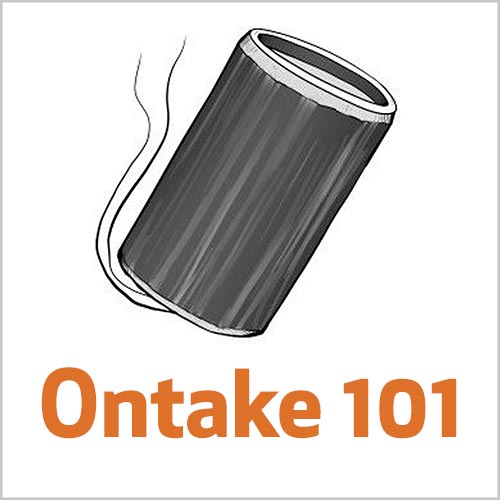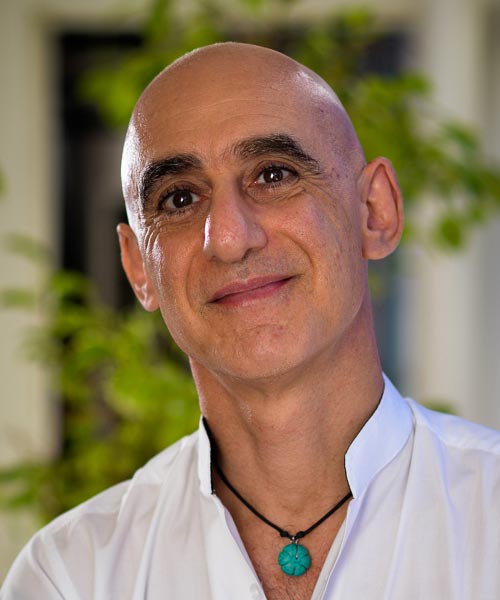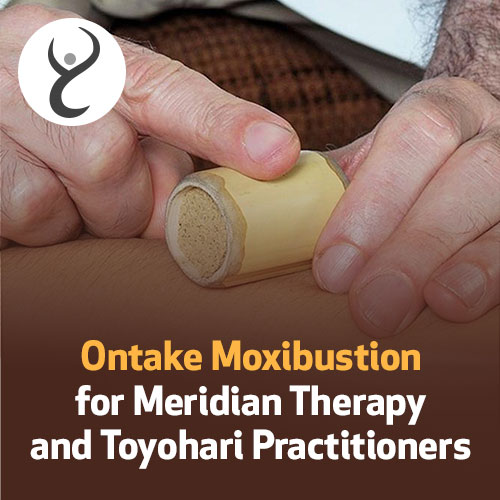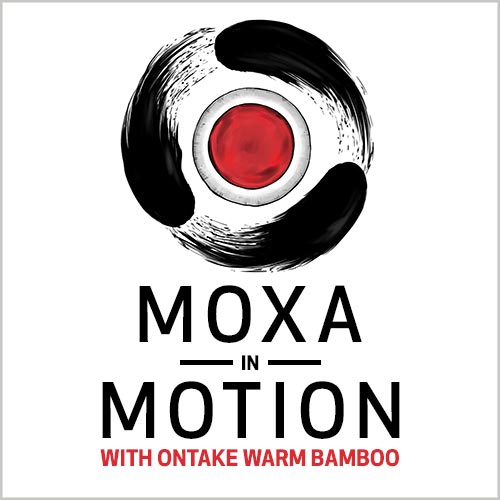Moxa In Motion With Ontake Warm Bamboo: A New Tool For Your Practice
Introduction
Ontake Warm Bamboo is a moxibustion technique with two additional components: pressure and rhythm. A short piece of bamboo is filled with moxa wool. When the moxa is ignited, the bamboo gets hot and can be held, tapped, pressed or rolled along the acupuncture channels. Additionally, using a metronome, these techniques can be applied rhythmically at specific frequencies of beats per minute.
Description
Make a long bamboo tube about 4 cm long, without a joint. The thickness of the bamboo tube wall should be about 3–4 mm. Fill it with semi-pure moxa, leaving a space at both ends of the bamboo. —Makoto Yamashita.[i]
Ontake functions in the same way as a traditional moxa box, except it’s far smaller and much more mobile. In contrast to a moxa box or a moxa stick, it can be rolled on the skin and pressed deep into the soft tissue. It fits comfortably in your hand and can be tapped or rolled rhythmically over any part of the body, including the face. It allows you to be agile and flexible, treating small or broad areas quickly. Crucially, patients love the experience of rhythmic moxa in motion, which is pleasant to receive and deeply calming.
Any part of the bamboo can be applied to the skin. You can roll with it, knock percussively with the side, tap the lighted end briefly on the skin or press deeply into articulations with the lip. Even without any theory or training, applying heated bamboo to a painful area can get results.
Applications
Ontake has been around for a short time in Japan, perhaps since the 1960s, and historically it was used as a local branch tool. So, for example, if there was tightness or pain at the shoulder, it was applied there. In the last ten years, however, its uses and applications have grown more sophisticated, and it can be applied with a growing number of theoretical models.
Meridian Frequencies and Manaka’s Wooden Hammer and Needle
Rhythmic percussion of the meridians has been a tradition in Japanese acupuncture going back to the Mubunryu style in the late 1500s when blunt gold and silver needles were lightly tapped with a wooden mallet on reactive points on the abdomen.[ii] In the late 20th century, Yoshio Manaka, a renowned Japanese doctor, acupuncturist and researcher, developed percussive tapping treatments using a wooden hammer and needle.[iii]
He then researched specific tapping frequencies of beats per minute for each acupuncture channel. These frequencies advanced the efficacy and range of his methods considerably, and his meridian frequencies became an important part of his routines.
Channel Frequencies in BPM (Beats Per Minute)
104 Midline channels (Ren and Du Mai)
108 Large intestine and liver
112 Bladder
120 Gallbladder, small intestine, kidneys
126 Heart, lung
132 Stomach, spleen
152 Sanjiao
176 Pericardium
Ontake treatment has also proved effective when applied at the meridian frequencies. When heat is applied in this way, there are rapid changes in soft tissue tension, exceeding the effectiveness of the wooden hammer and needle in quite unexpected ways.
Branch Treatments and Sore Throat
Ontake is a versatile tool for treating symptoms, especially when using yin and yang principles of opposites. Here’s a simple example: when applied on the sacrum, it is effective for sore throat. The throat is superior and anterior, and the sacrum is inferior and posterior. If the sore throat is central, roll the Ontake on the midline of the sacrum at 104 bpm (Du Mai). If the sore throat is on the left, roll the Ontake more on the right of the sacrum at 112 bpm (bladder), and vice versa. This treatment exploits the relationships between the kidney and bladder channels and the Ren and Du Mai vessels.
Root Treatments
Most acupuncture treatment relies on the identification of patterns such as, for example, kidney deficiency or liver excess. There is a tradition in Japanese acupuncture, and especially in moxibustion, of generalised treatments that do not depend on the identification of patterns but instead provide an overall boost to the body’s recovery mechanisms. Perhaps the most famous of these in moxibustion is the Sawada protocol, “a formula of points that could be used on all patients, regardless of complaint or condition. This formula fortified the patient’s constitution and strengthened the qi and the defensive and healing energies”.[iv]
Ontake can be used in the same way, focusing on the yangming channels of the arm and leg and the bladder channel on the back. This sequence is a powerful whole-body root treatment that stimulates healing responses without focusing on patterns or symptoms.[v]
Pain Relief
The late Dr Richard Tan was well known for relieving pain rapidly using channel pairings and different holographic models. His approach can be adapted to Ontake: identifying the sick channel, finding a dynamic paired channel and rolling or tapping with bamboo on the paired channel using Tan’s holographic mappings to inform the location. Ontake has the advantage of being needle-free, and the heat creates dynamic and long-lasting changes, arguably more effective than needling.[vi]
Hirata Zones and Dermatome Moxibustion
Hot Needle Therapy (Nesshin Kairyo Jutsu) was a Japanese holographic system of treatment. It was developed by Kurakichi Hirata (1901–1945), who developed a unique dermatome moxibustion system using a heated probe. Ontake is a safe and effective substitute for the probes, breathing new life into this remarkable method and empowering patients to continue treatment at home.[vii]
Conclusion
Ontake Warm Bamboo is a simple and elegant new moxa device, cheap to buy and easy to make yourself. It can be adapted to any clinical practice that uses the meridian system, and it can be used with a variety of theoretical models. Finally, it can empower patients to self-treat safely.
Other Courses By This Teacher




Overview
GETTING STARTED WITH THE ONTAKE METHOD
Moxibustion is ancient. Even more ancient than needling. In modern acupuncture, however, it is often considered too time-consuming, too risky or too difficult to master. And yet the classics say: for chronic conditions, moxa has no equal.
Coming to the rescue of time-poor, risk-averse, present-day acupuncturists is the Ontake Method from Japan. This innovative approach uses a piece of bamboo filled with burning moxa wool to roll, tap and press on the meridians using a metronome programmed to each meridian's frequency. The rhythmic application of heat, frequency and pressure triggers rapid shifts in your patients' body condition and mood but this method generates only a little smoke.
In this highly practical introductory module you will:
(1) Discover what Ontake is and the kind of things the Ontake Method can do.
(2) Learn how to load, light and extinguish the Ontake.
(3) Acquire three basic strokes to get you started: tapping, rolling and super-knocking.
(4) Explore a simple treatment model for the rapid relief of pain anywhere on the midline of the body with Ontake, including sore throat, neck pain, middle back, pubic symphysis and epigastric pain.
Learning Objectives
- View supplementing and draining application methods, namely rolling, tapping and super-knocking on the skin with Ontake
- Load, light, extinguish, clean, reload, relight Ontake
- Apply a theoretical model for the treatment of midline pain by pairing anatomical opposite points on the Ren, Du, kidney and bladder channels.
- Describe the origins of Ontake in the 1960s and list three main spheres of application: root, branch, adjunctive treatment.
Your Teacher

Oran Kivity
British acupuncturist Oran Kivity trained in Europe, China, and Japan. In practice since 1987, he has ignited interest in the Ontake Method, a rhythmic moxibustion method from Japan.
Categories
Tags
Ontake Moxibustion for Meridian Therapy and Toyohari Practitioners
Treating the Back and Consolidating the Pulse
with Oran Kivity
See In StoreOverview
The Ontake Method uses a Japanese moxibustion tool made of bamboo filled with burning moxa wool to roll, tap and lightly press on the meridians. The rhythmic application of heat and pressure, especially on the back, consolidates the pulse and, working with the root treatment, can trigger rapid shifts in patients' body condition and mood.
This highly enjoyable two-hour recorded webinar explores Ontake's origins in Japan, with an overview of historical and contemporary uses. Using numerous short video clips, dynamic presentations, and frequent breaks for questions and reflection, students learn how to load and light Ontake and contrast the different application methods for deficient and excess areas along channels.
In this highly practical introductory two-hour, you will learn:
(1) How to load, light and extinguish Ontake
(2) Protocols to augment the root treatment
(3) Protocols for assessing the lustre of the skin and balancing kyo and jitsu with Ontake
(4) A simple routine for treating the back to consolidate the pulse
ONTAKE 101. Oran Kivity also has another short course called Ontake 101. What’s the difference between that one and this one?”
This webinar re-presents the Ontake 101 information in a live setting with participants' questions and answers, focusing on treating the back instead of treating midline pain. This one is two hours; Ontake 101 is one hour.
Depending on your preference and approach, you should choose either this module or Ontake 101.
Learning Objectives
- Learn how to load, light and extinguish Ontake.
- Discover the origins or Ontake, and theoretical models for its application.
- Apply a protocol to augment the root treatment of Meridian Therapy or Toyohari.
- Assess the lustre of the skin and balance deficiency / excess (kyo and jitsu) with Ontake.
- Adapt a simple protocol for treating the back to consolidate the pulse.
Your Teacher

Oran Kivity
British acupuncturist Oran Kivity trained in Europe, China, and Japan. In practice since 1987, he has ignited interest in the Ontake Method, a rhythmic moxibustion method from Japan.
